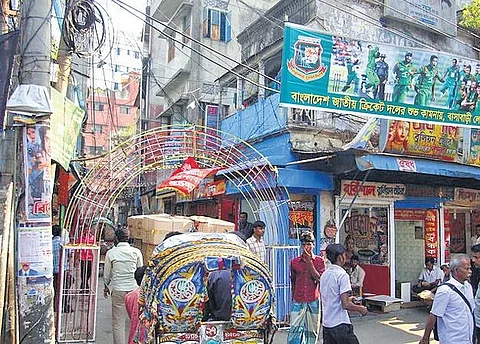

Tracing the evolution of a country based on short stories is a mammoth task. To do so for a nation wrought with political and militant turmoil is an even taller ask. That is exactly what Rifat Munim set out to do with Bangladesh: A Literary Journey Through 50 Short Stories.
At 607 pages, Bangladesh is a tome providing glimpses into the day-to-day lives of characters whose lived experiences are so familiar yet distant. It is different from any anthology to have emerged from across our eastern border for being a collection of stories that were all originally written in Bengali and later translated to English. It features writings by the likes of Shawkat Osman, Taslima Nasreen, Kayes Ahmed and Shaheen Akhtar to name a few, but equal and unwavering focus is placed on the translators––Mahmud Rahman, Kaiser Haq, Shawkat Hussain, Parveen Elias, Rama Sangye and Devalina Mookerjee among others––who rallied from around the world to bring the work to fruition.

It was Indian translator Arunava Sinha––his work is also part of the anthology ––who sowed the seed for the book in Munim, and three years later, the final product is a smorgasbord of fantasy, whim, hope and reality. The book stresses the need to discount a prevalent discourse that questions the ability of South Asians to do justice to English translations when compared to their native English counterparts.
“If South Asian writers can write so deftly in English with the likes of Amitav Ghosh, Anjum Hassan and Amit Chaudhuri, how can there not be exceptional translators? For instance, had a South Asian translated Gitanjali Shree’s Tomb of Sands, I am sure they would have made different choices than Daisy Rockwell,” says Munim. “What could be better than an anthology to promote a language and its journey,” he adds.
The book is designed to imitate Munim’s own journey of research for the book. Discovering the glorious shifts in styles and narratives as he went from one decade to another (1950s-90s), helped form the theme of the literary work. Driven by the singular idea of breaking stereotypes, he has tried to bring in the same diversity and flavour to his curation. The book features works by important female writers who, in the 1960s, not only brought feminism on the table, but also got voices of the underprivileged. Also, included are stories by male writers who were experimenting to come up with newer techniques of storytelling.
Most tales in the collection lend themselves to a kind of sensitivity that often feels imperative to the narrative. Take, for instance, Manju Sarker’s ‘My Dear Countrymen’. Translated by Quazi Mostain Billah, it revolves around a villager whose life-long allegiance to a party was determined by one hug from a politician on the campaign trail. Ironically, the story ends with the man falling into a ditch, and the voice of the leader, who is now the president, on the radio, bringing to light the tokenism of politics.
Treading the fine line between the ‘art for art’s sake’ narrative and telling a socio-politically conscious story, however, proved difficult. The works of author Rashid Karim, for instance, who believed in hooking the reader, is drawn as a pioneer of the former. But, its lack of social sensitivity does little to discount the plethora of offerings they brought to the table. Munim admits to have put aside his own “Marxist bent of thinking” to curate for the bigger picture.
This is a book for the curious. What good is a translated work if it stays within the geographical confines. Bangladesh aims to go beyond the borders and find a place in history not just for its fictional value, but also for shining the light on the significance of translations in the South Asian context.